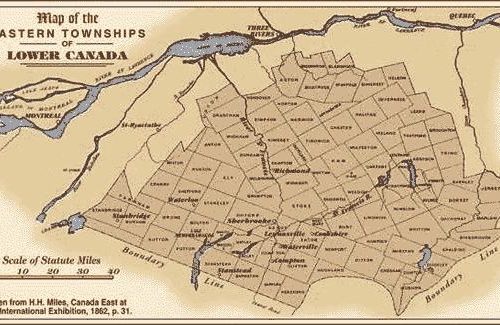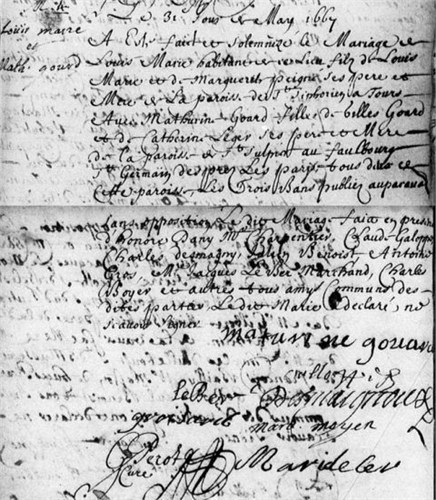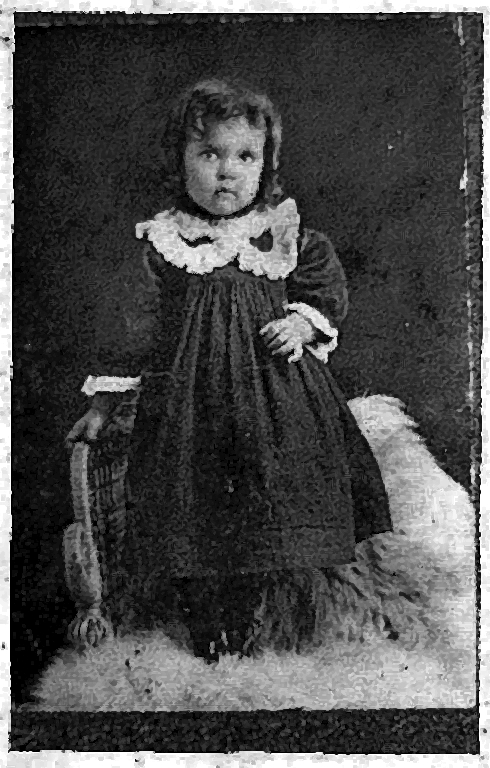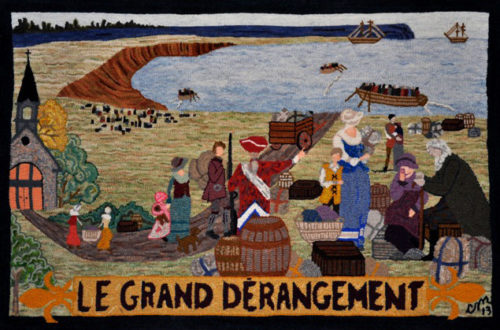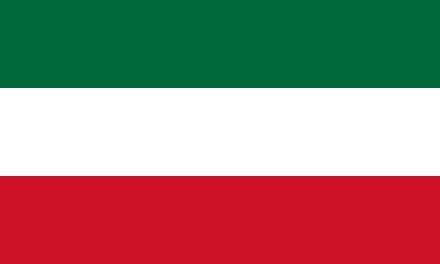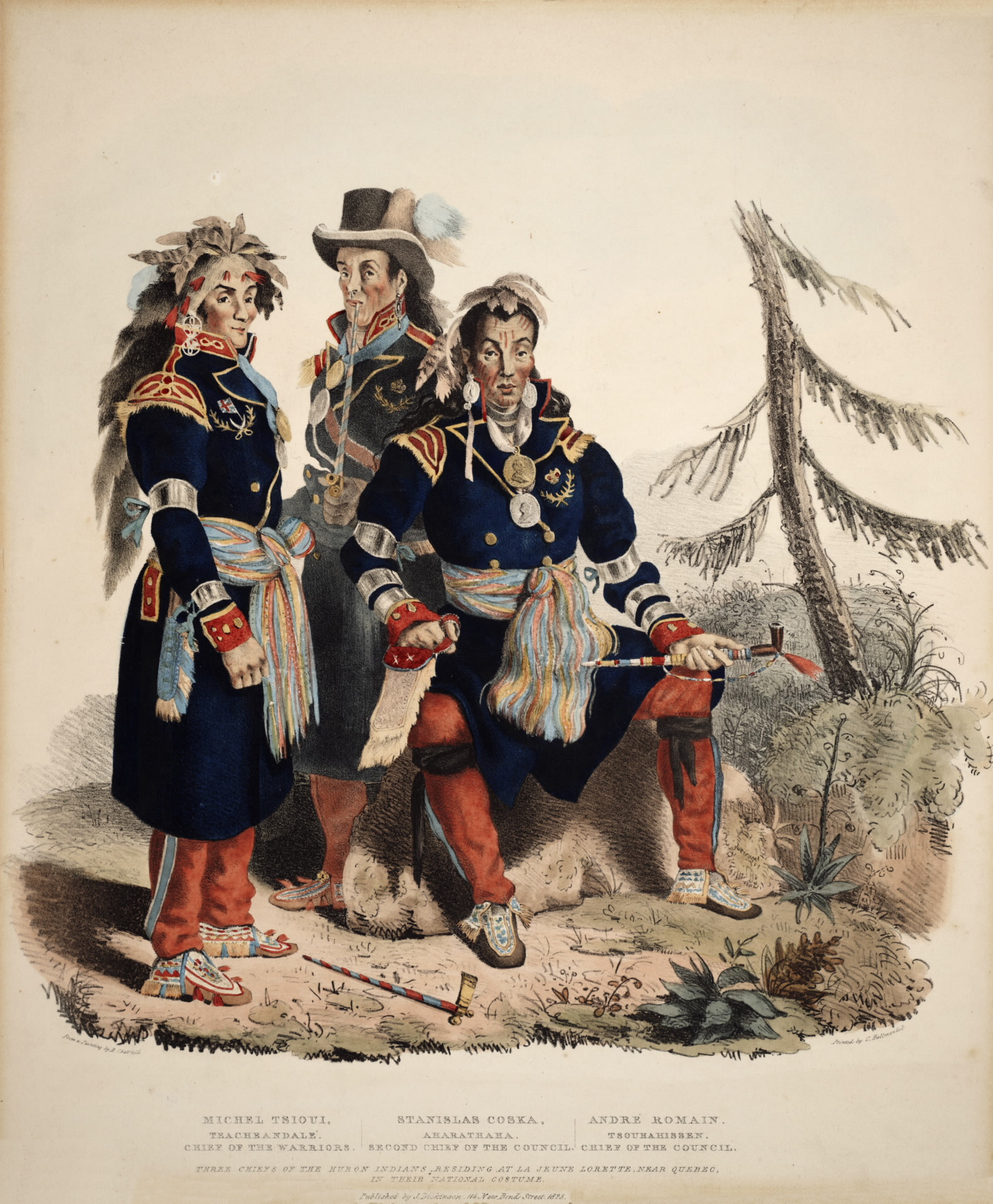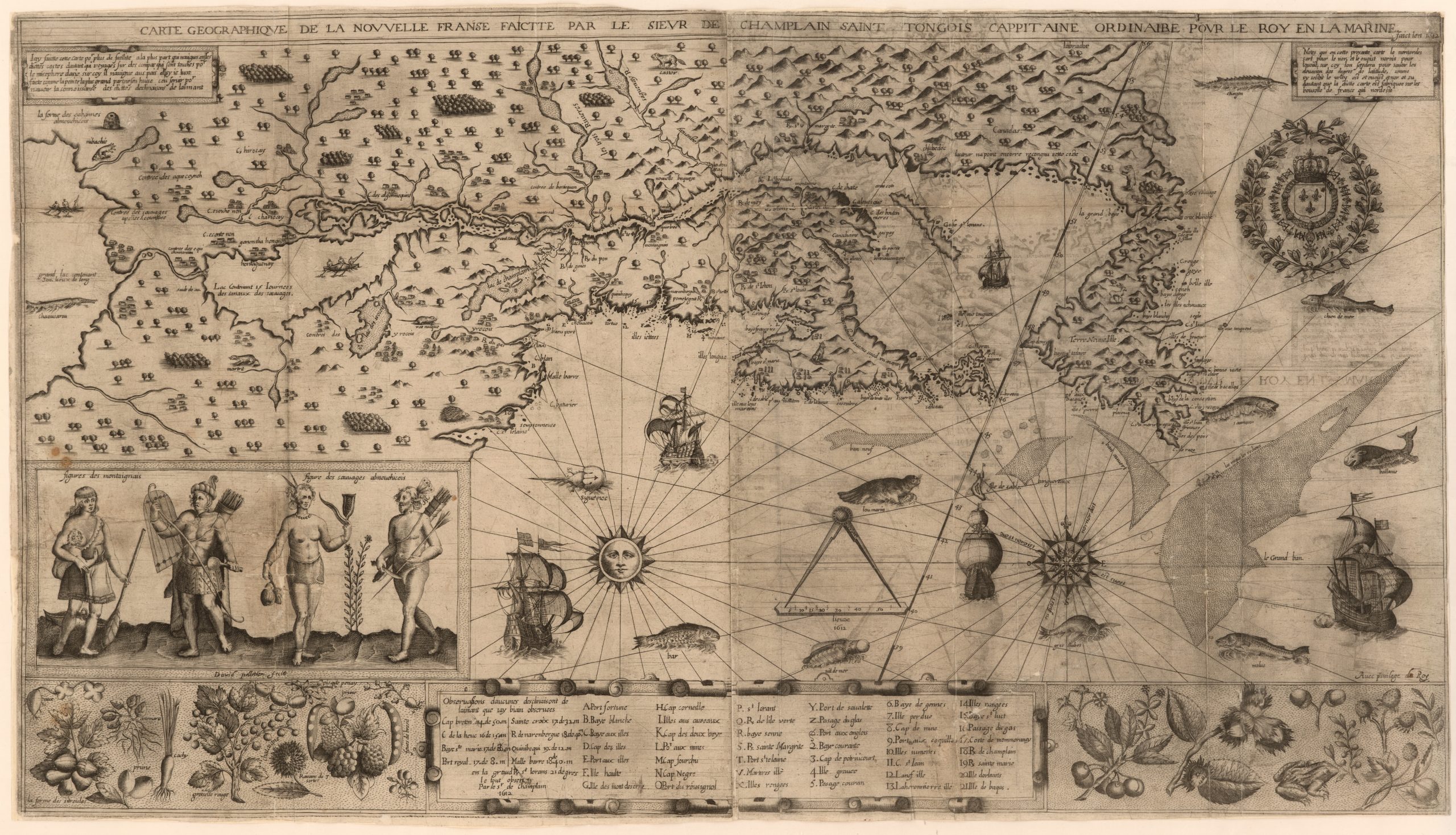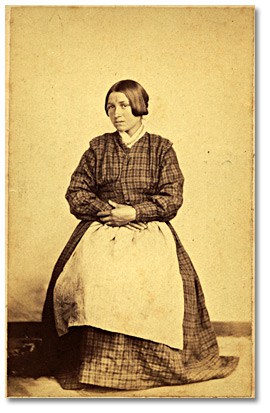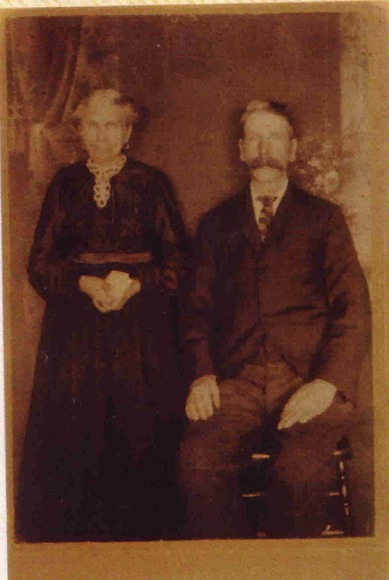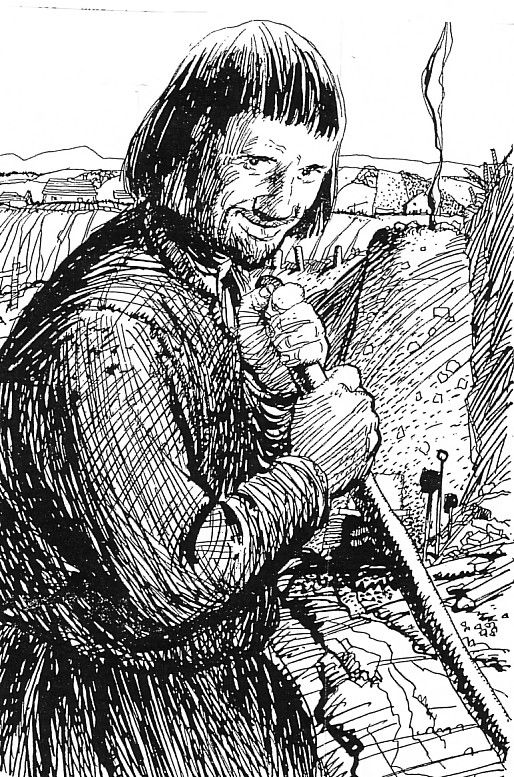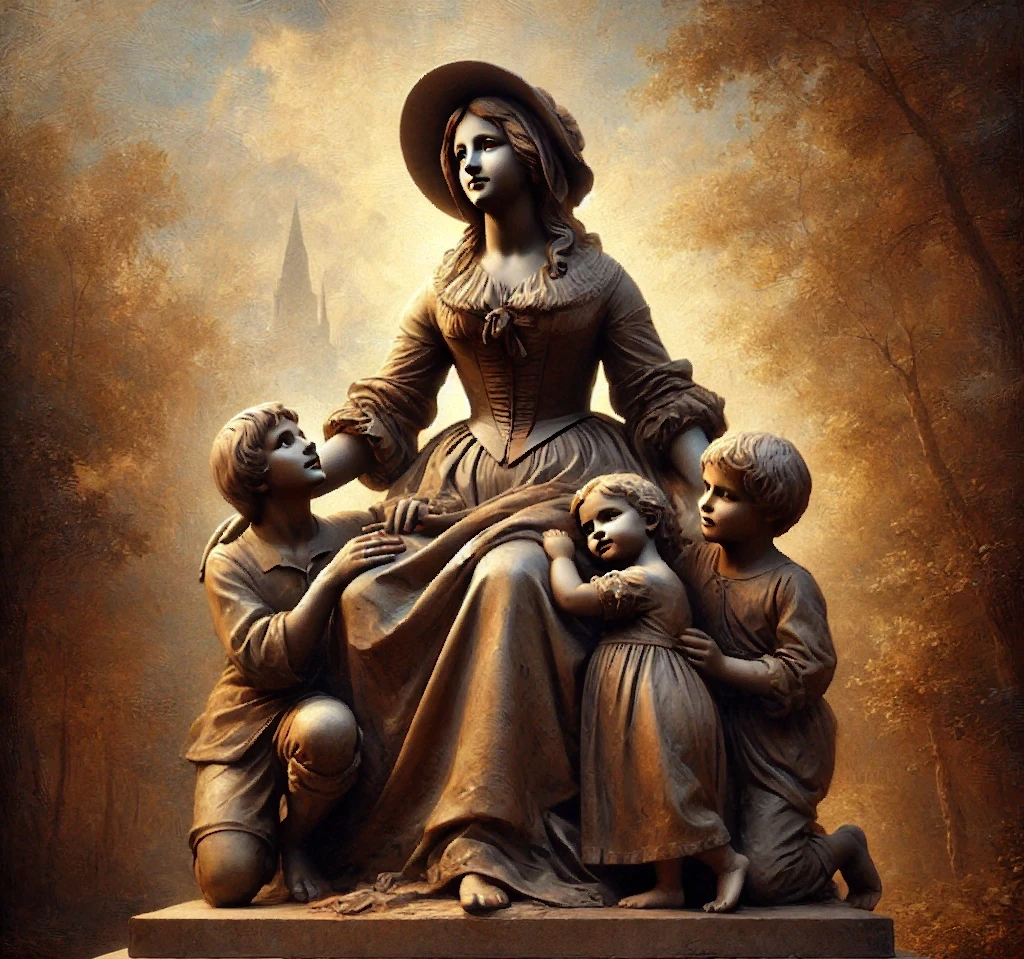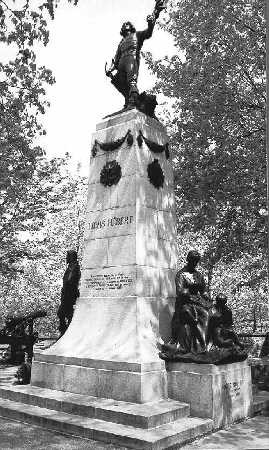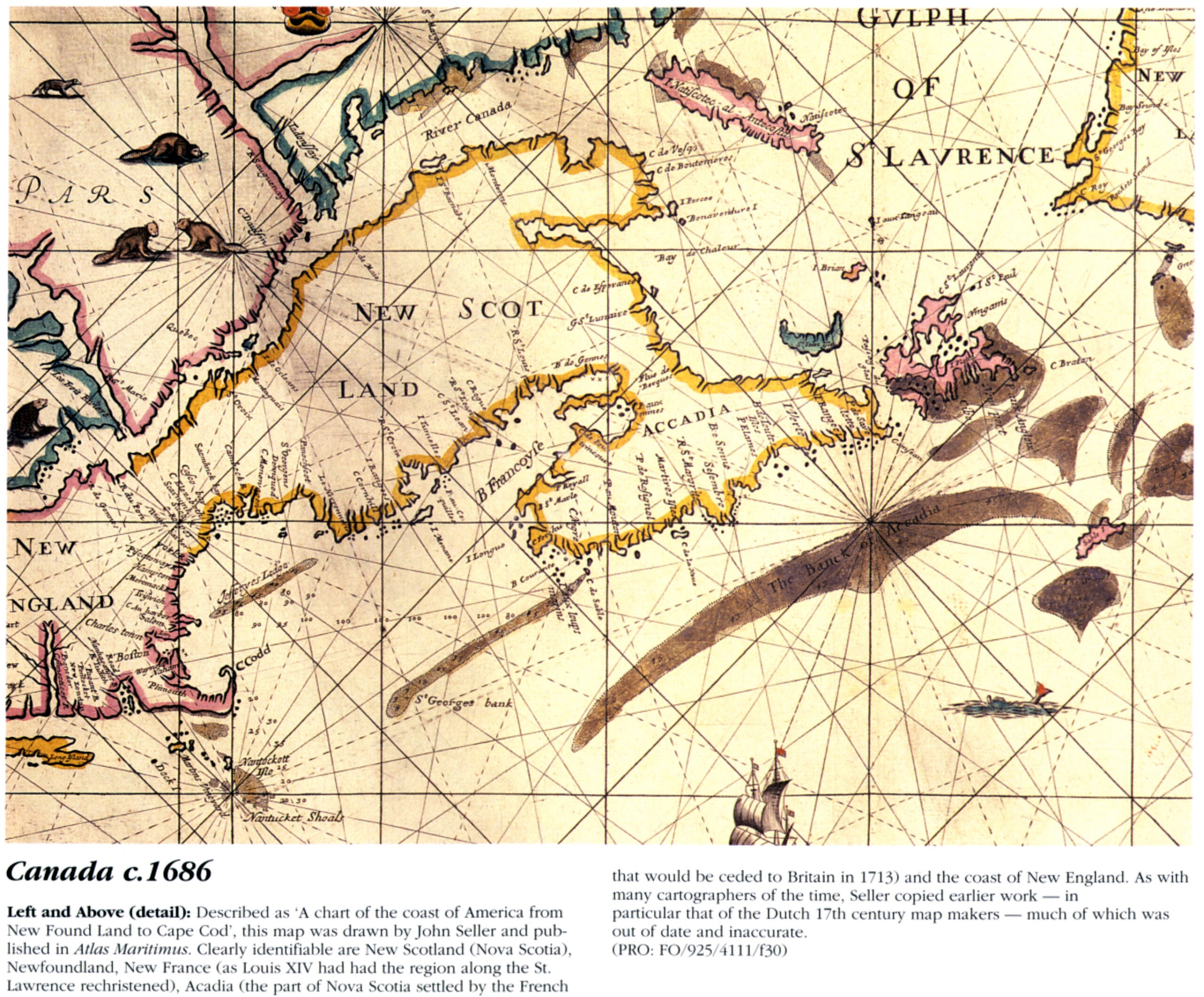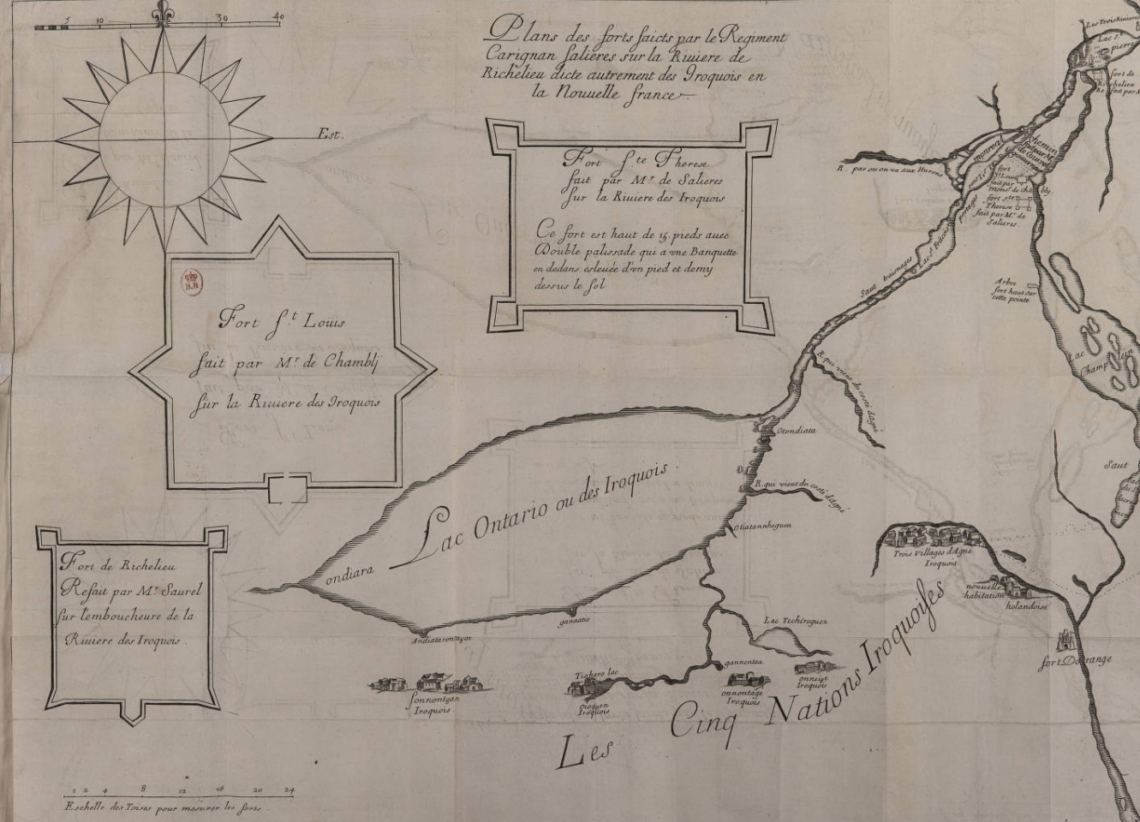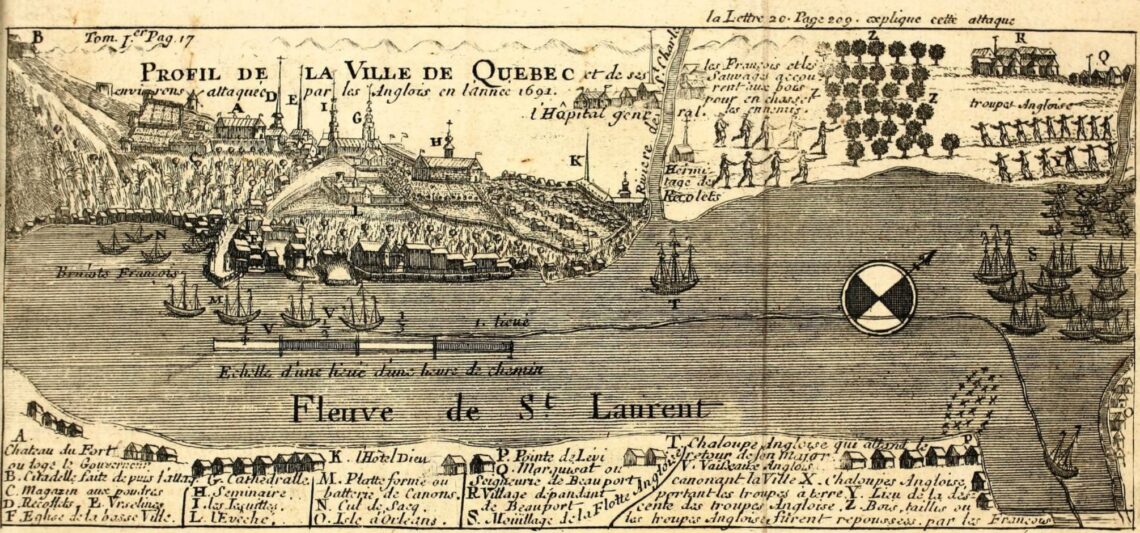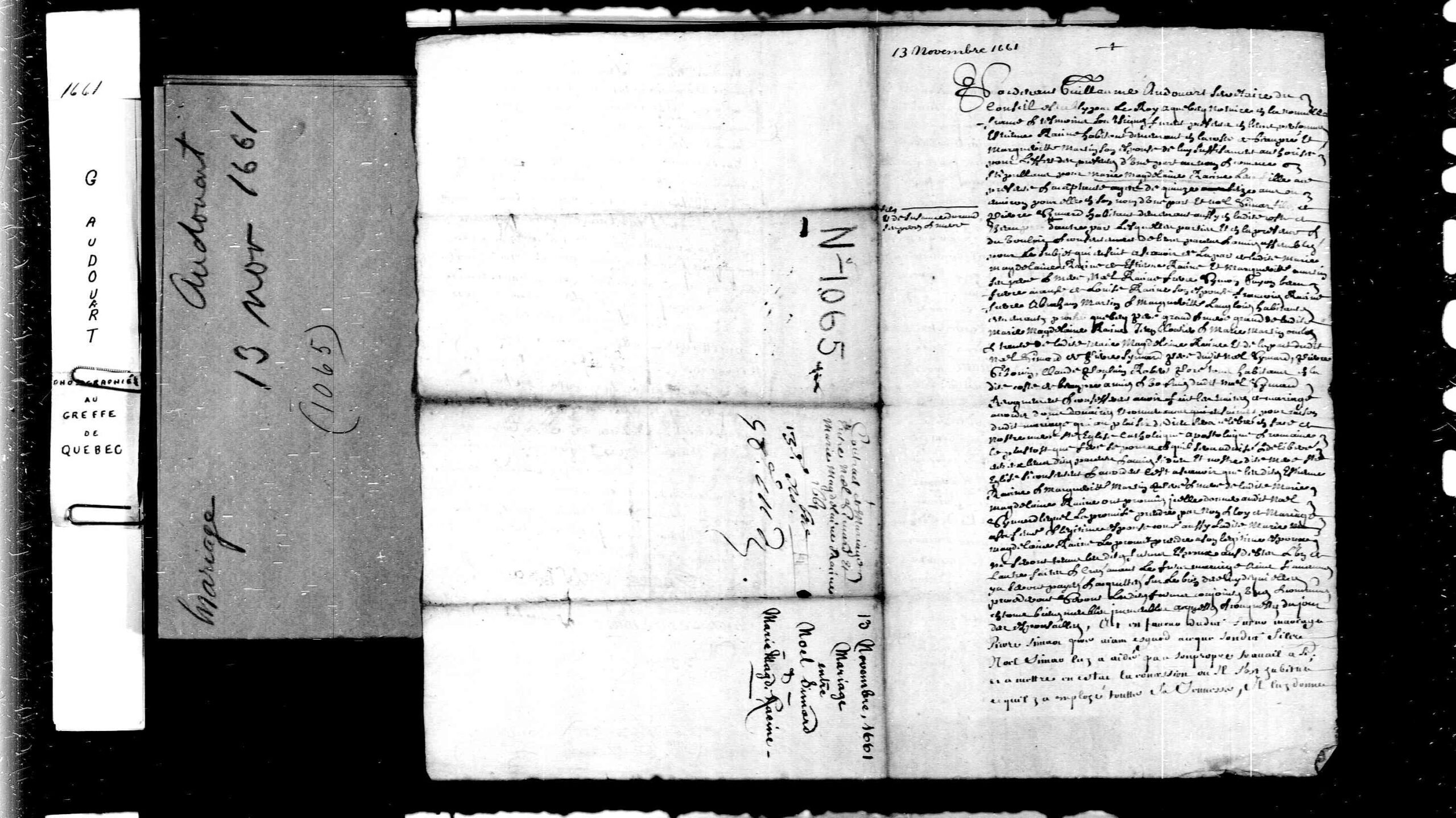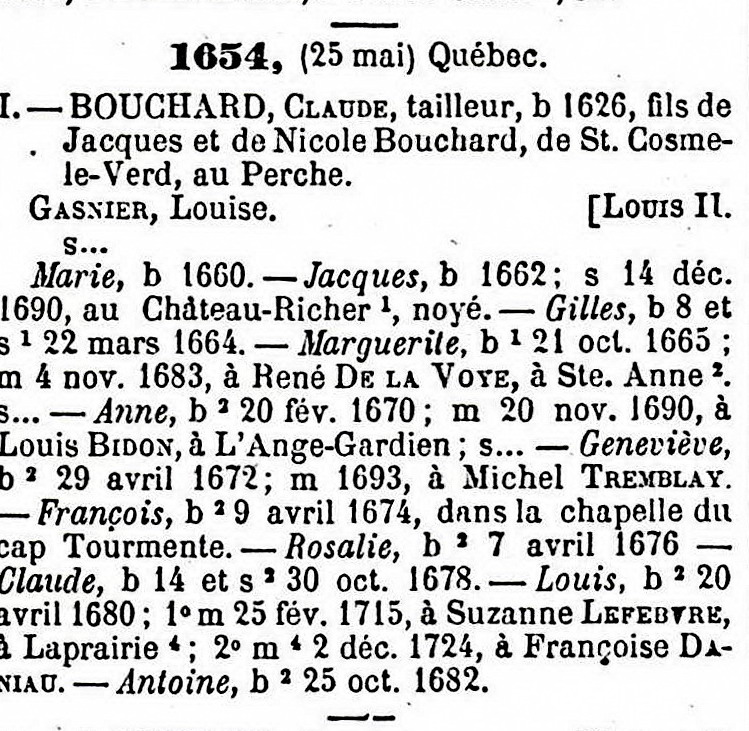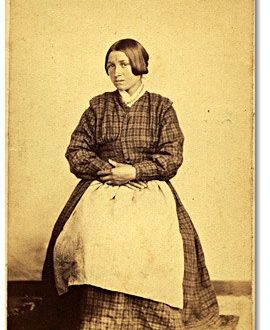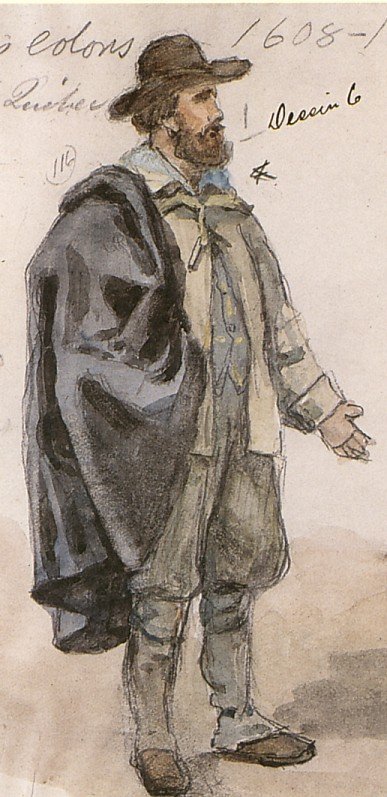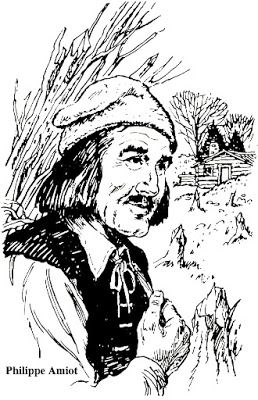Quebec & Canada
-
Using Cyprien Tanguay’s texts…
Over the past few weeks, I have received numerous requests for guidance on how to use Tanguay’s texts for genealogy research (and where to get them). I have to admit that it does seem a bit odd to me that these genealogy texts are not well understood. But after having received the requests, I did some searching on the web only to note that there are no real guides readily available for novices, so here’s my feeble attempt at creating one. By way of a bit of background, the texts discussed here are called: Dictionnaire généalogique des Familles Canadiennes depuis la fondation de la colonie jusqu’à nos jours (Genealogical Dictionary…
-
“Dit” Names
The use of Dit names in French Canada (Bas Canada) is both very common and confusing. Currently, I am working with another Deyo cousin to attempt to unravel yet another Deyo mystery. This part of my family line is now being reworked for the fourth time! I think I might be getting good at it. Briefly here’s the mystery… It appears, now, that I might be descended from a woman we believe was named Honoree Beaulac. Her family name (surname) has the following common dit names (there may be others as well): Desmarais Lake Lefebvre Marest Beaulaque Hertel (a nice German sounding name, eh?) By the way you will also…
-
Rituel du Diocèse de Quebec
If you are performing research in Quebec, the Rituel du Diocèse de Quebec may prove useful in providing clues regarding the name or names of your ancestors. To quote the PRDH: Among Catholics, choice of first name wasn’t left to chance or parents’ imagination. On the contrary, the church liked to control the attribution of first names to ensure that on the day they were baptised, children received the name of a saint who would guide them throughout their life. In the Rituel du Diocèse de Quebec, which laid out the rules to follow for writing baptismal, marriage, and burial certificates in Quebec, Monsignor de Saint-Vallier stipulated, “The Church forbids…
-
Quebec Genealogy
This is a copy of my Quebec Genealogy presentation delivered on 9 October 2010 at the Parker Genealogical Society in Parker, CO. You may download it to your PC or read it on-line below. The Download [download id=”13060″]
-
Lacolle, Quebec- A brief history
Lacolle is the area from which the Joseph Dion family emigrated to the United States. Historically both Rabideau and Dion/ Deyo family members lived and traversed this region. Click here to read about the Lacolle Military Battles. source [the original site has been removed- minor edits and corrections from the original text made by ManyRoads] First written mention of Lacolle can be traced back to July 4, 1609 when Samuel de Champlain and his entourage stopped briefly at the mouth of a small stream for a meal before continuing southward up the Richelieu River into the lake which now bears his name. In his journal Champlain referred to the location…
-
Lacolle Battles
Both the Rabideau & Deyo families have roots in the area surrounding Lacolle Quebec. In the early to mid-1800s Lacolle was an area that saw numerous battles and skirmishes, both in the war of 1812 and the Patriotes Rebellion of 1837-1838 including: Battle Of Lacolle Mills (1812) Second Battle of Lacolle (1814) Battle at Odelltown and the Battle of Lacolle (November 7 & 9, 1838) Click here to read a more general area history for Lacolle Battle Of Lacolle Mills (1812) source Wikipedia The Battle of Lacolle Mills was fought on November 20, 1812, during the War of 1812. In this relatively short and fast battle, a very small garrison…
-
Quebec’s French speaking Native People (Metis)
Original Source Article Names used to designate Natives, other than the name of their tribe or nation, include : Savage (a pejorative, rarely used today but common only a half-century ago), Indian, North American Indian, Native, and Amerindian (this one seems to be used only in French). In French, the corresponding terms are: Sauvage, Indien, Indien nord-americain, Autochtone and Amerindien. Metis means mixed blood, that is initially one parent was White, and one was Native, while later one or both were Metis. While a Metis can be any place where there are Natives and Whites, Metis Nation is defined as including the Metis living in the early Manitoba lands. Contrary…
-
Who were Christiaan Christiaansz and Marie Anne Christiansen?
This is a copy of the article by Eugenie Fellows that appeared in the Spring 2000 edition of the Memoires de la Societe Genealogique Canadienne-Francaise which purported to solve the mystery. Unfortunately the author disregarded a very important note that was included in the original article (in the October 1997 issue of the New York Genealogical and Biographical Record) on which she based her article that throws doubt on the assumption that Marie Anne’s parents were Christian Christiansen and Elizabeth Elderszen. The original article by Barbara A. Barth was published in two installments and was about the “Family of Ysbrant Eldersz of Rennselaerswyck”. It is rather a lengthy article (17…
-
Marie Anne (Annetje) Louise Christiansen
source: Rootsweb (original source link was removed) Born: Abt 1675-1676, Corlaer (Schenectady), NY, US Baptized: 12 Jul 1699, Notre-Dame-Cathédrale, Montreal, Quebec, Canada Marriage: Moise DUPUIS 21 Jul 1697, Reformed Dutch Church, Albany, NY, US Died: 26 Oct 1750, Laprairie, Quebec, Canada Buried: 27 Oct 1750, La-Nativité-de-la-Bienheureuse-Vierge-Marie-de-Laprairie, Quebec, Canada General Notes: Marie Anne (Annetje) Louise Christiansen: Analysis: Marie Anne was reportedly born ca. 1672/1676 in Corlaer (Schenectady), NY(1). A record of her birth has not been found. She married Moise DUPUY on 21 Jun 1697 in the Reformed Dutch Church of Albany, NY(2). Moise was indicated as being from Canada, but both were living in Albany at the time of the…
-
David Estourneau, Sébastienne Guéry & Jeanne Baril
David Estourneau (1616 – 1670); name variations: L’Estourneau, L’Estoumeau, Lestourneau, Létourneau. Father and Mother: David Letourneau was born around 1616, the son of David Lerourneau and Jeanne Dupen. His birthplace was in the Charente-Maritime region, specifically the Arrondissement of Rochefort, Canton Tornay-Charente Saintonge, near the border of Poitou and Aunis. Birth: Around 1616, he was born in Muron, Aunis (Charente-Maritime), France. He learned the trade of miller from his father at the watermill Les Tourneaux (named as such on a 1719 map), located at the place called ETOURNEAU, on the road to Rochefort, at the junction of D911 and the southern branch of D107 (12 Rue de la Pépinière), about…
-
Jean Guyon du Buisson & Mathurine Robin dit Boulé
-
Marie Rollet
Marie Rolet aka Rollet, Roillet, Hébert, Hubou Born about 1580 in St-Germain-des-Prés, Paris, Île-de-France, France Daughter of Jean Rollet and Anne Cogu Sister of Claude (Rolet) Rollet Died: 27 May 1649 age 69 in Québec, Canada, Nouvelle-France Marie Rolet (circa 1580 – 1649)Marie Rolet was born around 1580 in Paris, France, to Jean Rollet, a royal cannoner, and Anne Cogu. She grew up in a well-off family and was educated, which was rare for women at the time. She married François Dufeu, but he passed away before she remarried. On February 19, 1601, at about 21 years old, she married Louis Hébert, a 36-year-old Parisian apothecary. They had three children:…
-
Louis Hebert: First Apothecary in North America
-
Jacques Guyon & Marie Huet
-
Louis Marie dit Sainte-Marie & Mathurine Goard
Louis Marie dit Sainte-Marie: A Pioneer in New France, Carignan-Salières Regiment Louis Marie, son of Louis Marie and Marguerite Peigné, was born in Saint-Symphorien de Tours, in Touraine (Indre-et-Loire), around 1634. The exact year of his birth is unknown. He arrived in New France on August 17, 1665, with the Carignan regiment, la Varenne company, aboard the ship “Le Justice,” which had left La Rochelle on May 24, 1665, and reached Quebec on September 14, 1665. He received the scapular of Mount Carmel on October 10, 1665, in Quebec. After working on the construction of Fort Sainte-Thérèse on the banks of the Richelieu River, his company was sent to garrison…
-
Protected: Jacques Beauvais dit Saint-James & Jeanne Soldé
There is no excerpt because this is a protected post.
-
Noël Simard & Marie-Madeleine Racine
-
Pierre Miville “dit” Le Suisse & Charlotte Maugis
-
Claude Bouchard & Louise Gasnier aka Gagné
-
Our ‘Filles du Roi’
Based on the data we have at our disposal on the date of this writing, we know that the following women are identified as being our family’s “Filles du Roi”. This list is not complete. The most interesting, from a Rabideau perspective, is Jean Denote; she was married to Andre Robidou the founder of our family line in the new world.
-
Les Filles Du Roi- “Daughters of the King”
The information contained in this Posting was sourced from numerous websites (all noted below) and is presented here to facilitate our genealogical research. All rights belong to the original authors. This is being used under the laws of ‘fair use’. Wikipedia has an article on the subject of the Daughter’s of the King (Les Filles du Roi) as well. The filles du roi, or King’s Daughters, were some 770 women who arrived in the colony of New France (Canada) between 1663 and 1673, under the financial sponsorship of King Louis XIV of France. They were part of King Louis XIV’s program to promote the settlement of his colony in Canada.…
-
Carignan-Salières Regiment Officers and Soldiers
The following information was sourced from: http://www.fillesduroi.org/src/soldiers.htm and is presented here to facilitate our genealogical research. All rights belong to the original author. This is being used under the laws of ‘fair use’. This listing is a copy of one the original to be found at the following link: Alphabetical listing of the Carignan-Salières Regiment Officers and Soldiers (who settled in Canada). Those highlighted are Rabideau ‘family forebears’.
-
Zacharie Cloustier & Sainte (Xainte) Dupont
-
Guillaume Couture & Anne Emard
Anne Émard Variations: Aymart, Esmart, Émar, Père et mère: Jean Aymard et Marie Bineau[1] Naissance: Elle naît à Saint-André, Niort, Poitou (Deux-Sèvres), France et est baptisée le 22 octobre 1627 à Saint-André, Niort[2] MigrationAnne arrive dans la colonie avec ses deux soeurs Barbe et Magdeleine, y étant mentionnée pour la première fois en 1649.[3] Anne (Emard) Émard a vécuau Canada, Nouvelle-France. MariageLe 18 novembre 1649, Anne Émard et Guillaume Couture firent un contrat de mariage à la Pointe de Lévy par devant Guillaume Audouart, Guillaume donne à Anne un lit de plume garni et une vache à lait. Guillaume signe, Anne ne pouvait.[4] [5] [6] Le 18 de novembre mil…
-
Abraham Martin & Marguerite Langlois
-
Jean Nicolet: Explorer of New France
-
Marie Crevet & Robert Caron
-
Françoise Langlois
-
Philippe Amyot & Anne Couvent
-
Mathieu Amiot, Sieur de Villeneuve & Marie Miville

